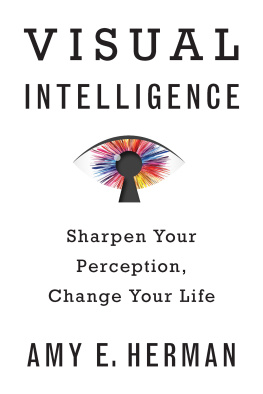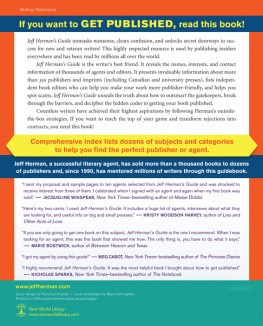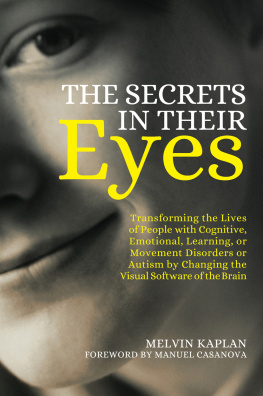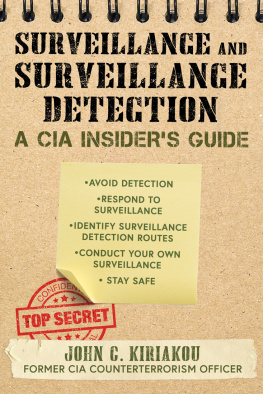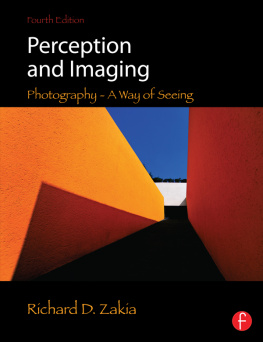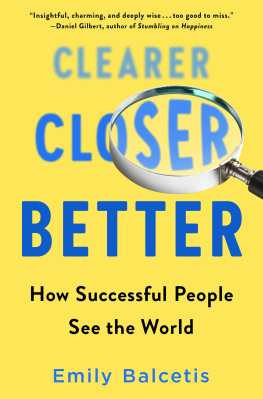Copyright 2016 by Amy E. Herman
All rights reserved
For information about permission to reproduce selections from this book, write to or to Permissions, Houghton Mifflin Harcourt Publishing Company, 3 Park Avenue, 19th Floor, New York, New York 10016.
www.hmhco.com
Library of Congress Cataloging-in-Publication Data:
Names: Herman, Amy, author.
Title: Visual intelligence: sharpen your perception, change your life / Amy E. Herman.
Description: Boston : Houghton Mifflin Harcourt, [2016]
An Eamon Dolan Book. | Includes bibliographical references and index.
Identifiers: LCCN 2015037245 | ISBN 9780544381056 (hardcover) | ISBN 9780544381063 (ebook) | ISBN 9780544882003 (pbk. (international edition))
Subjects: LCSH : Visual perception. | Visual literacy.
Classification: LCC BF 241 . H 436 2016 | DDC 152.14dc23
LC record available at http://lccn.loc.gov/2015037245
Cover design by Brian Moore
Author photograph Christine Butler
v1.0516
To Ian. Everything. Always.
The world is full of magic things,
patiently waiting for our senses to grow sharper.
AUTHOR UNKNOWN
Authors Note
It has been my great privilege to teach The Art of Perception for fourteen years. In doing so, I have spoken with and written to thousands of people from around the world about their experiences with art, observation, perception, and communication. Since some of these conversations took place years before this book was even an idea, since my wonderful program participants didnt plan on being part of this book when they signed up for my class, and since many of my interviewees have extremely sensitive jobs, I have changed the names and identifying details of most of the people whose stories appear in this book to protect their privacy. Any resulting resemblances to persons living or dead are entirely coincidental and unintentional. Visual Intelligence is a work of nonfiction. All stories are recounted as they happened or were told to me, subject to the limitations of memory. I couldnt fact-check all of the personal stories people told me, but I included only those I believed to be true.
Note from the Publisher: The text of this ebook is accompanied by full-color art reproductions and photographs. For the best reading experience, this ebook should be viewed on a color device.
Introduction
AS I STOOD in the hallway outside the apartment, everything took on a hazy, slow-motion quality. Shouting echoed behind the door. Dust particles floated in the fluorescent light. A cat mewed from somewhere to my left. The officer in front of me raised his fist to knock, while his partnertense, armed, ready for actioncovered him. As the domestic dispute blared beyond the door, the black hole of the second officers gun barrel gaped like a silent scream. How had I gotten here?
Since I was little, I had seen the art in everything: in the beautiful asymmetry of sunlight streaming through the trees and the unique patterns of stones and shells left behind when the tide washed out. I was never a particularly creative person myself, but that didnt stop me from studying art history. Following college, though, my upbringing by my scientist father and ultra-practical mother and a desire to serve led me to law school. And this particularly intense police ride-along.
To detach myself from the worry bubbling in my gut, I studied my surroundings as I would a painting, analyzing each nuance, taking stock of both foreground and back, trying to find meaning in small, seemingly incongruent details. I knew this was an unusual way to thinkId been told so often enoughbut I always found my art background useful in the practice of law, where the need to be an objective observer is critical.
And then I had a terrible thought: what if the officers I was with didnt have these skills? What the first officer saw when the door openedbe it a crying baby, a confused elderly woman, or a gun-wielding madmanand how he conveyed it to his partner in that split second would affect the outcome for every one of us. My life was in the hands of a virtual stranger and his ability to see and accurately convey what he saw.
Thankfully the police were able to defuse the situation and my experience didnt end in disaster, but as generally happens when were nose-to-nose with a deadly weapon for the first time or forced to face our own mortality, it haunted me for years after. How many times do our lives depend upon someone elses observation skills? For most of us, its too many to count: whenever we get on an airplane or a train, into a taxicab, or onto an operating table. Its not always life-or-death; sometimes its just life-altering. Other peoples attention to detail and follow-through can also affect our job, our reputation, our safety, and our success. And we can affect theirs. Its a responsibility we shouldnt take lightly, as it can mean the difference between a promotion and a demotion, between a triumph and a tragedy, between a normal Tuesday in September and 9/11.
Seeing clearly and communicating effectively are not rocket science; theyre straightforward skills. Were born hardwired for both. But more often than wed care to admit, we fail to use these skills. We show up at the wrong airport gate and try to board the wrong plane, we send an email to the wrong recipient saying something we never should have said, we miss a key piece of evidence that was staring us right in the face. Why? Because were hardwired for those errors as well.
Our brains can see only so much, and can process even less. I knew this from years of practicing law and witnessing firsthand the unreliability of eyewitnesses and the fallibility of first-person accounts, but it wasnt until I followed my heart back to the art world that I began to actively investigate the mysteries of perception. As the head of education of The Frick Collection in New York City, I helped bring a course created by a dermatology professor at Yale to NYC medical schools, teaching students to analyze works of art in order to improve their patient observation skills. It was very successfula clinical study found that the students who took the course had diagnostic skills that were 56 percent better than peers who didntand I wanted to understand the science behind it. I wanted to know more about the mechanics of how we see and how simply looking at art could improve.
I became a neuroscience fanatic, reading all the research I could find and interviewing the researchers whod conducted it. I even signed up for an online community neuroscience video game. And I discovered that while my own perceptions about how we see were wrong on many levelsapparently the retina is part of the brain, not the eyethey were spot-on in the most important ways: while we might not fully understand the human brain, we can change it. We can train our brains to see more, and to observe more accurately.
And as I often do when I learn something fantastic, I wanted to share it with everyone, not just medical students. I was out to dinner with friends sharing some of what I learned one night soon after 9/11, when the city was still reeling from the terrorist attacks and resulting stories of heroism and heartbreak. One of my friends asked if I had considered training first responders. I hadnt, but as I thought back to my fear in the hallway on that law student ride-along, not knowing how the officers I was with would see or react to what they saw, it made perfect sense. I fell in love with the idea of pairing cops with Rembrandt; I just had to convince the law enforcement community. The following Monday I cold-called the NYPD.
Id like to bring your cops to our museum to look at art, I told the bewildered deputy commissioner. I half expected him to hang up on me, but to his credit, he agreed to give it a try. Within a few weeks, we had weapons in the Frick for the first time ever, and The Art of Perception was born.
Next page
